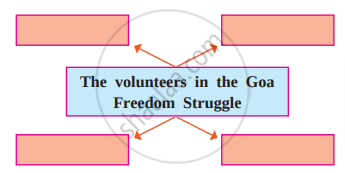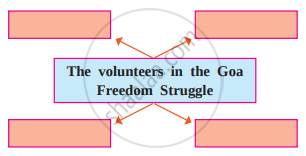Topics
Renaissance in Europe and Development of Science
European Colonialism
India and European Colonialism
Colonialism and the Marathas
India: Social and Religious Reforms
Indian Struggle Against Colonialism
- Struggle before 1857
- The Freedom Struggle of 1857
- Background of Founding the Indian National Congress
- Foundation of the Indian National Congress
- 'Moderates' and 'Extremists'
- Armed Revolutionaries in India
- Mahatma Gandhi: Non-violent Resistance Movement
- Indian National Army (Azad Hind Sena)
- 'Quit India' Movement of 1942
Decolonisation to Political Integration of India
World Wars and India
World : Decolonisation
Cold War
India Transformed - Part 1
India Transformed - Part 2
Notes
Decolonisation to Political Integration of India - Goa:
The movement of liberating Goa from the Portuguese rule had begun during pre-independence times only. In 1928, ‘Goa Congress Committee’ was founded in Mumbai. Dr.T.B.Kunha was the president of this committee. In 1929, Goa Congress Committee became an integral branch of the Indian National Congress. In 1939, posters with ‘Quit Goa’ slogans were posted all over Goa. Francis Mascarenhas, the President of the United Goan Front unfurled the Indian flag in Goa. In 1946, under the leadership of Dr. Ram Manohar Lohia, the movement of ‘Civil Disobedience’ was launched in Goa. Dr.Lohia was arrested and was deported from Goa. Dr.T.B. Kunha, Purushottam Kakodkar, Dr.Ram Hegde, Dr. P. P. Shirodkar, and Gopal Mayekar were arrested for participating in the satyagraha at Madgaon. Dr. Kunha was imprisoned for eight years. He was sent to a prison in Portugal. Later, after returning to India, he started publishing two newspapers, namely, ‘Azad Goa’ and ‘Swatantra Goa’.
After India’s independence, the movement for liberating Goa took roots in Maharashtra. In 1954, the ‘Goa Vimochan Sahayak Samiti’ was founded at Pune. Keshavarao Jedhe, N.G. Gore and Jayantrao Tilak took on the responsibility of directing the movement. Some groups who volunteered for the cause of Goa’s liberation marched to Goa under the leadership of N.G. Gore and Senapati Bapat. One group of those volunteers unfurled the national flag of India on the fort of Panaji.
There were a number of other eminent people, who participated in the Goa liberation movement. It included people like Pandit Mahadevshastri Joshi, Shirubhau Limaye, Peter Alvaris, and Sudha Joshi. The contribution of Mohan Ranade in this struggle is very significant. He systematically began anti-Portuguese propaganda in Goa. With the help of Azad Gomantak Dal, he also started an armed struggle against the Portuguese. During an attack on a police station, he was shot and got injured. Portuguese Government kept him in jail till 1972. Acharya P.K. Atre used the daily newspaper ‘Maratha’, published by him as a platform for supporting the movement.
The strong public sentiments in the matter of Goa’s liberation moved Pandit Jawaharlal Nehru to act on it. A mission was planned under the code name, ‘Operation Vijay’. Indian army descended in Goa to accomplish the mission. The army was helped by local civilians as well. They showed the army the places where the Portuguese had planted landmines. The Portuguese surrendered within 48 hours. On 19th December 1961, Goa became a part of the Indian Republic. The foreign rule of 450 years came to an end.


